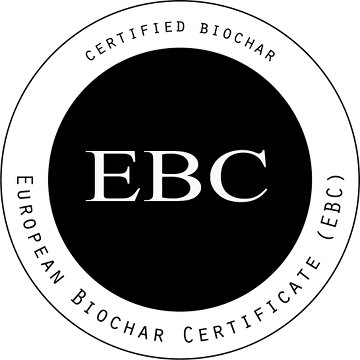Introduction
To limit climate change, the active removal of greenhouse gases from the atmosphere has become unavoidable. The reduction of anthropogenic greenhouse gas emissions alone, even by more than 90% of the current level, is no longer sufficient to limit the temperature increase to 1.5 - 2 °C. However, the active removal of greenhouse gases requires the creation of massive carbon sinks. By the end of the century, more than 200 billion tonnes of carbon will have to be safely stored worldwide for the long term in soils, vegetation, materials, water, and geological deposits.
The sustainable production of biomass and its non-energetic use in materials or in the form of pyrolysis products (biochar and pyro-oils) is the simplest, safest, and quickest method that can be implemented globally.
The C-sink certification is essentially a two-step process.
- The EBC certifies the C-sink potential that biochar has at the factory gate of the biochar producer. This includes all carbon expenditures of the biomass production, transportation, chipping, storing, drying as well as all carbon expenditures of the pyrolysis facility.
- At the factory gate, the biochar is taken over by a tracking system that follows the biochar to the final sink and assesses all carbon expenditures and greenhouse gas emissions that occur on these pathways (i.e. transporting, milling, processing). As soon as the biochar is mixed into agricultural substrates such as fodder, compost, liquid manure, and fertilizer or into durable materials such as concrete, resins, or plastics, the C-sink potential can be converted into tradable C-sink certificates.
The certification of the C-sink potential of biochar is a service provided by the EBC to all EBC certified producers in Europe, USA, and Canada. For biochar producers in all other parts of the world, we tailored specially dedicated EBC packages to allow for C-sink certification.
The detailed method description and the calculations for the determination of the C-sink potential can be downloaded under the following link.
Guidelines for the certification of the C-sink potential of biochar - Version 2.1 (2/10/2021)
We only certify what we can measure, calculate, track, and predict with certainty. All greenhouse gas emissions caused to build up a C-sink are deducted from the C-sink potential.
With the present guidelines for the certification of the C-sink potential of biochar, the EBC is taking an important first step towards the breakthrough of the key technology for saving the climate.


